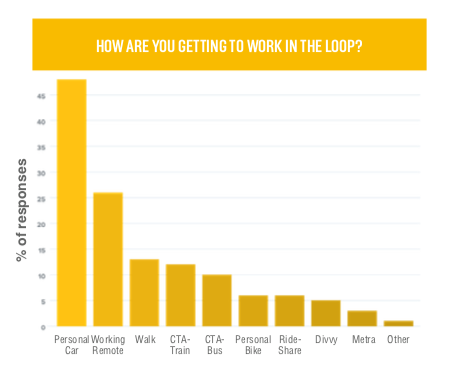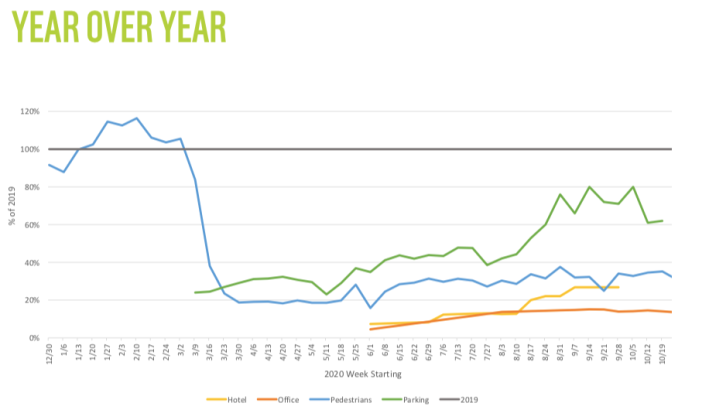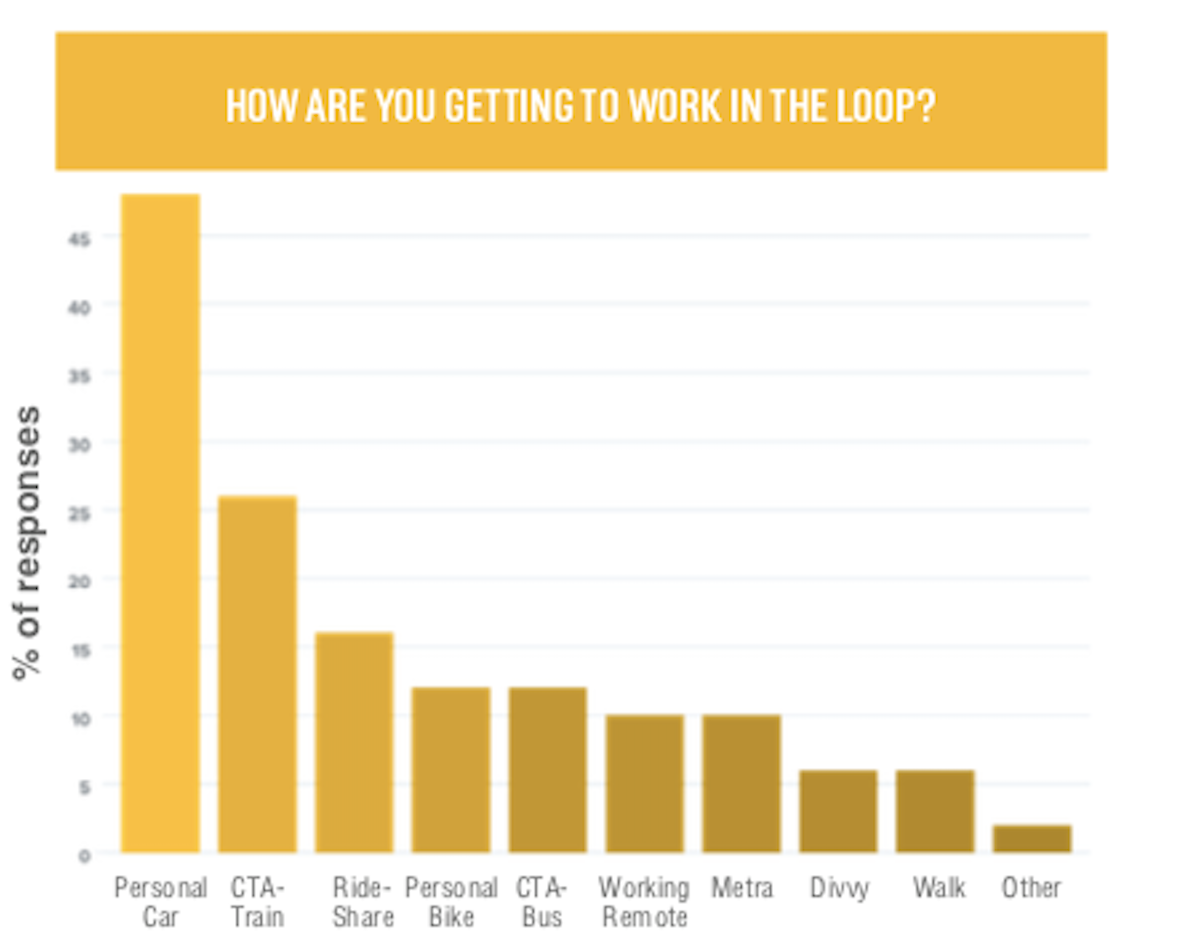Last month, I reported on the Chicago Loop Alliance’s monthly recovery survey, which compiles data on business activity, parking rates and pedestrian counts in the Loop. The September survey boded ill for car traffic, showing parking rates already at a whopping 80 percent of pre-pandemic levels the same time last year, while office occupancy remained below 20 percent and the pedestrian count hadn’t even scraped 40 percent -- an unsettling disparity in modes that suggested increased car ownership and smacked of an impending carmageddon as folks gradually returned to work and recreation downtown.
Happily, I may have spoken too soon. The October CLA report shows an encouraging turn toward increased public transit use and decreased car parking rates from the prior month. While office occupancy showed little to no change from September (around 17 percent of the prior year), parking rates dipped from 80 percent down to 60 percent. Of the 54 survey respondents, almost 40 percent said they were using CTA trains or buses to get to work, up from about 25 percent in September. However, over 45 percent of respondents did say they were driving to the Loop, about the same as in September.

Chicago Loop Alliance President Michael Edwards sees this as a positive shift. “What is most encouraging to me for October is the increase in respondents who said they primarily used public transportation to get to the Loop,” he said in a statement. “We hosted a virtual event in October…where Dr. Robert Murphy, an infectious disease expert from Northwestern, said public transportation has not been a major spreader of COVID-19 and with mask compliance and social distancing is a safe way to get to work. Staggered start times could help to get people back to work on public transit, while avoiding crowding.”
From the charts, it appears the increase in CTA ridership could be partially attributed to commuters who walked in warmer months taking to public transit as cold temps set in. Interestingly, respondents who said they were using their personal bike to commute increased from about 7 percent in September to over 10 percent in October -- perhaps an indication of success of the Chicago Loop Alliance’s cool weather cycling tips, posted on their website last month.

While the increased use of CTA and bike commuting highlighted in the report is a welcome sign, it’s important to bear in mind that the September survey contained data from 82 respondents, while the October survey only received responses from 54, a sample size decrease of 34 percent -- significant enough to make a side-by-side comparison imperfect at best. However, the dip in parking, calculated from occupied parking spots -- especially in colder months -- is a positive turn we hope to see continue in the months to come.



